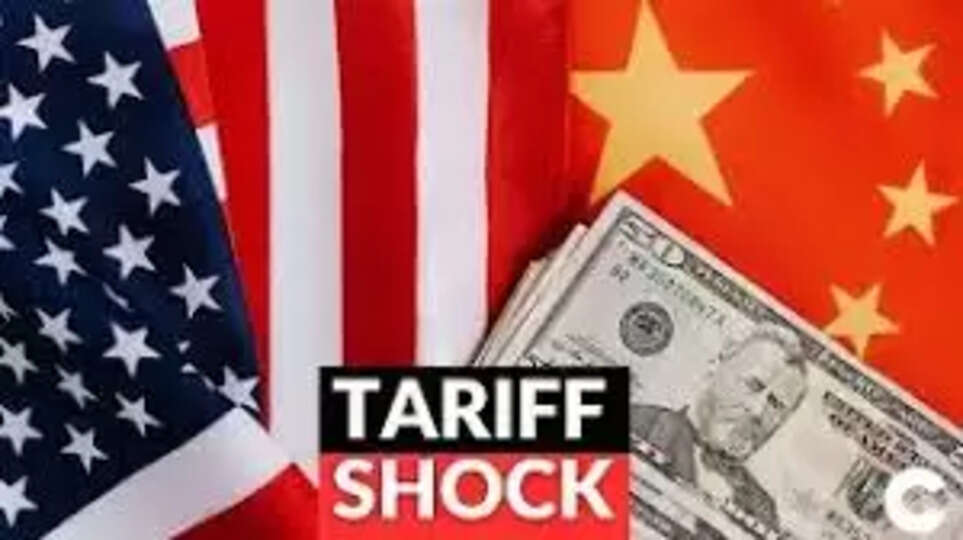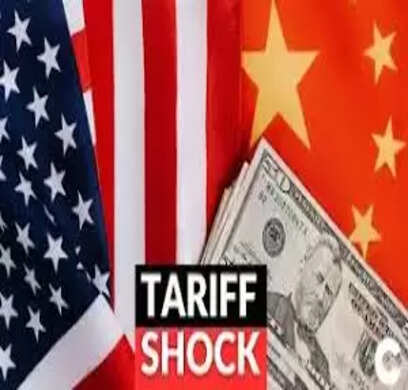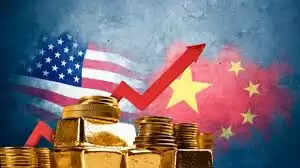Global Markets Jolt: Asian Rally, Gold and Silver Record Highs as US Trade Jitters Subside
Analyze the recent decoupling of global financial markets: a US market crash followed by a robust Asian market rally fueled by hopes of reduced US-China trade tensions, alongside gold and silver hitting new record highs driven by safe-haven demand and rate cut expectations.


Introduction
The global financial landscape has been defined by a jarring divergence in recent days, creating a scenario where markets appear to be speaking two different languages about risk.
Following a significant downturn in the U.S. markets—triggered primarily by renewed concerns over U.S. fiscal policy, the ongoing government shutdown, and anxieties regarding the future of high-flying tech valuations—a swift and robust recovery materialized in Asia. This Asian market rally was directly attributed by many analysts to reports of potentially reduced U.S.–China trade tensions, specifically the hope that aggressive tariff threats might be softened or a high-level summit might yield a new temporary truce. The perceived easing of the world’s most significant geopolitical economic conflict provided an immediate, palpable surge of optimism, suggesting that global supply chains and economic growth might avoid a worst-case scenario.
However, the narrative is complicated by another, seemingly contradictory trend: the prices of gold and silver have soared to fresh record highs. These precious metals, traditionally viewed as the ultimate safe-haven assets, typically surge during times of extreme uncertainty and fear, not during a return to market optimism. This simultaneous rise in equity market stability and safe-haven assets suggests a complex reality: while the short-term trade outlook has improved, the underlying, deeper structural anxieties about global economic stability, the persistent threat of U.S. fiscal and monetary policy shifts, and systemic geopolitical risk remain profoundly high. This divergence paints a picture of a global economy caught between short-term diplomatic relief and long-term systemic fears.
The US Market Crash and Its Initial Global Ripple Effect
The recent U.S. market volatility was a culmination of several pressing domestic and geopolitical factors, culminating in a sharp sell-off that sent tremors across global exchanges.
The primary catalysts included:
A Tech Valuation Correction: After months of historic gains driven by enthusiasm for Artificial Intelligence (AI) and the so-called "Magnificent Seven" stocks, many investors concluded that valuations had become unsustainable, leading to aggressive profit-taking. This correction was exacerbated by fears that the anticipated AI-driven productivity boost would take longer to materialize than stock prices suggested.
The U.S. Government Shutdown: The protracted political deadlock in Washington, D.C., resulting in an extended government shutdown, delayed the release of crucial economic data. This "data blackout" left investors blind to the true health of the U.S. economy, spiking volatility and increasing risk aversion as traders feared the unknown.
Renewed Trade War Rhetoric: A fresh wave of aggressive tariff threats and export control announcements by the U.S. administration, specifically targeting a 100% tariff hike on select Chinese products, shocked markets that had begun to price in a fragile truce. This move immediately raised the specter of a full-blown trade war, which historically leads to global economic slowdowns.
The immediate fallout saw trillions wiped from global equity values, with European markets tracking the American decline. This initial shock underscored the reality that despite diversification efforts, the sheer size and dominance of the U.S. economy and its technology sector still dictate the global risk appetite.

Asian Markets Rally: The Hope for Decoupling
The swift recovery and subsequent rally in Asian markets provided the first real evidence of a potential decoupling from U.S. sentiment, driven almost entirely by the perception of an immediate de-escalation in the U.S.-China trade war.
The key turning point was the emergence of speculation and official statements indicating a pathway to dialogue between the U.S. and Chinese leadership. Traders, desperate for relief from the tariff instability, eagerly priced in the possibility of a new, even if temporary, trade truce, similar to previous 90-day pauses.
This speculative relief had several significant impacts across Asia:
Supply Chain Sector Gains: Stock in companies highly dependent on global supply chains, particularly those in South Korea, Taiwan, and Japan's electronics and manufacturing sectors, experienced significant upward momentum. The removal of the immediate threat of a new, crippling tariff environment meant their production and export pipelines were secured for the near term.
Chinese Equity Stabilization: Mainland Chinese markets (Shanghai and Shenzhen) and Hong Kong’s Hang Seng Index rebounded as the possibility of a full trade collapse diminished. A stable trade relationship is paramount to China's export-driven economy, and any perceived easing is a massive psychological boost for investors.
Commodity Price Bounce-Back: Oil and other industrial commodities, which had slumped on fears of a global recession caused by a trade war, rebounded modestly. The Asian manufacturing sector is a massive consumer of these raw materials, and an Asian rally signals continued strong demand, easing worries over a severe global growth slowdown.
The Asian rally illustrated that for the economies most exposed to the U.S.-China trade dynamic, the immediate hope for diplomatic resolution outweighed the broader, ongoing anxieties emanating from U.S. fiscal and monetary instability.
The Safe-Haven Paradox: Gold and Silver Hit Record Highs
In a stark contrast to the Asian equity rally, the simultaneous surge of gold and silver to all-time record highs reveals that the celebratory mood in equity markets is not universally shared, particularly among investors focused on risk management and long-term capital preservation.
The rally in precious metals—gold soaring past the $4,100 per ounce mark and silver surging past $50—is being driven by a powerful confluence of factors that speak to deep structural uncertainty despite the short-term trade relief:
Sustained Geopolitical Risk: While U.S.-China rhetoric may have cooled, the global geopolitical backdrop remains volatile, fueled by the conflicts in Eastern Europe and the Middle East, which continuously inject a "risk premium" into gold prices. These conflicts drive sustained demand for gold as a hedge against global instability and war risk.
Expectations of U.S. Interest Rate Cuts: Despite the U.S. Federal Reserve's cautious stance, the market is overwhelmingly pricing in further U.S. interest rate cuts in the near term. A lower interest rate environment is highly bullish for gold, a non-yielding asset, as it reduces the opportunity cost of holding the metal compared to government bonds. The ongoing U.S. government shutdown has also raised doubts about the economy's stability, reinforcing the case for rate cuts.
Inflation and De-Dollarization Fears: Central banks worldwide, led by major emerging economies, continue to purchase gold at record levels. This structural demand is driven by a desire to diversify reserves away from the U.S. dollar, which is perceived to be weakened by massive U.S. government debt and ongoing fiscal uncertainty. Gold is increasingly being viewed as a hedge against long-term U.S. fiscal irresponsibility and a declining dollar hegemony.
Silver’s Dual Demand: Silver is benefiting not only from its safe-haven status, tracking gold’s rally, but also from surging industrial demand. As a critical component in green energy technologies—like solar panels and electric vehicles—silver's price is supported by the global energy transition, leading to a "short squeeze" in the spot market and increased inflows into silver Exchange Traded Funds (ETFs).
The record highs in gold and silver are a clear indicator that a significant portion of the investment community is prioritizing protection against systemic economic and geopolitical risk over chasing equity gains, suggesting they see the current calm in trade as merely temporary.
Looking Ahead: The Interconnected Risks
The current market environment is a delicate balancing act. While Asian markets have seized on a temporary narrative of diplomatic relief, the record surge in precious metals tells the more truthful story of systemic, underlying anxiety.
Risk of Trade Truce Failure: The current Asian rally is built on the hope of reduced trade tensions. If the US-China high-level talks fail to yield a binding, substantial agreement—or if the U.S. implements its threatened tariffs—the Asian markets are highly vulnerable to a sharp correction, erasing recent gains and potentially leading to another global downturn.
The Role of Monetary Policy: The next moves by the U.S. Federal Reserve will be crucial. An unexpected halt to anticipated rate cuts could put significant pressure on the gold and silver rally, while continued dovishness will further fuel safe-haven demand, potentially pushing precious metals to new records.
The Global Growth Trajectory: The core question remains whether the global economy can achieve stable, non-inflationary growth while navigating geopolitical fragmentation and high debt loads. The Asian rally suggests optimism in global manufacturing resilience, but the gold rally warns that the fundamental structure of the global financial system is under increasing stress.
The coming weeks will be a critical test: will the optimistic short-term trade outlook prevail, allowing global equities to stabilize and push higher, or will the persistent safe-haven flight to gold and silver be vindicated by a return to intense geopolitical and economic volatility? For now, investors are hedging their bets, enjoying the temporary calm while holding firmly to the oldest store of value.
FAQ's (Frequently Asked Questions)
1. Why did the U.S. market crash have a relatively short-lived impact on Asian markets?
The impact was short-lived primarily because the Asian markets found immediate relief in the narrative of reduced U.S.–China trade tensions. Since many Asian economies are heavily reliant on exports and the stability of global supply chains, the hope that the world's two largest economies might avoid a full-scale trade war provided a powerful, immediate psychological boost that outweighed the anxieties from the U.S. domestic market correction.
2. What is the main reason gold and silver are hitting record highs despite the Asian market rally?
The record highs for gold and silver are driven by deep-seated long-term uncertainty, creating a safe-haven paradox. The key drivers are: 1) Geopolitical Risk (global conflicts); 2) U.S. Rate Cut Expectations (which reduce the opportunity cost of holding non-yielding bullion); and 3) De-Dollarization Fears (central banks buying gold to hedge against U.S. fiscal instability and debt). These systemic fears are independent of a short-term trade truce.
3. What specific factor is supporting silver's price in addition to its safe-haven status?
In addition to acting as a safe haven that tracks gold, silver is benefiting from strong industrial demand, particularly in the green energy sector. It is a crucial component in solar panels, electric vehicles, and other high-tech applications, making it an essential commodity in the global transition to renewable energy.
4. How is the U.S. government shutdown related to the gold and silver rally?
The U.S. government shutdown is related because it delayed the release of key economic data, creating a high degree of market uncertainty. This lack of clear data on the health of the U.S. economy pushed investors into the ultimate safe haven, gold, and also reinforced expectations that the Federal Reserve would be more likely to cut interest rates to stabilize the economy, a major catalyst for bullion prices.
5. What is the biggest risk to the current Asian market rally?
The biggest risk is the potential failure of U.S.–China trade talks. The rally is based on the expectation that aggressive tariffs will be reversed or softened. If the diplomatic efforts break down and the U.S. implements the threatened 100% tariffs, Asian markets, particularly in manufacturing and electronics, are likely to suffer a sharp, severe reversal.
SEO Based Viral and Trendy Hashtags and Keywords
Viral & Trendy Hashtags: #GoldRecordHigh #AsianMarketRally #USChinaTradeTensions #SafeHavenDemand #SilverSurge #MarketDecoupling #GlobalEconomy2025 #RateCutWatch #GazaCeasefireImpact
SEO Keywords: Asian market rally U.S. market crash, gold and silver record highs, impact of U.S.-China trade tensions on Asian stocks, safe-haven demand drivers, reason for silver price surge, U.S. government shutdown market impact, global financial market divergence, gold price forecast 2025, de-dollarization trend gold.
Conclusion
The market events of the past week present a quintessential study in global financial dynamics, confirming that while the world is interconnected, local relief can sometimes temporarily overshadow systemic fear. The initial, sharp U.S. market crash demonstrated the persistent, massive influence of American technology valuations and domestic political instability (like the government shutdown) on global investor sentiment.
The Asian rally, however, provided a crucial counter-narrative. It was not a sign of global stability, but a powerful, relief-driven reaction to the perceived easing of the most destructive risk factor: the U.S.–China trade war. This market bounce-back was based on hope for diplomatic reprieve, specifically benefiting export-heavy sectors in the region.
Ultimately, the most truthful signal of the global mood comes from the record highs of gold and silver. This safe-haven surge is a stark warning that while a short-term trade truce may be on the table, the long-term structural risks—unaddressed U.S. fiscal debt, the specter of continued global conflict, and the near-certainty of further interest rate cuts—remain the dominant forces driving high-net-worth capital. The world is not truly at peace; it is simply enjoying a momentary, fragile calm while preparing for deeper storms. Investors are advised to heed the message of the precious metals: diversify and secure capital, as the underlying uncertainty is far from resolved.
